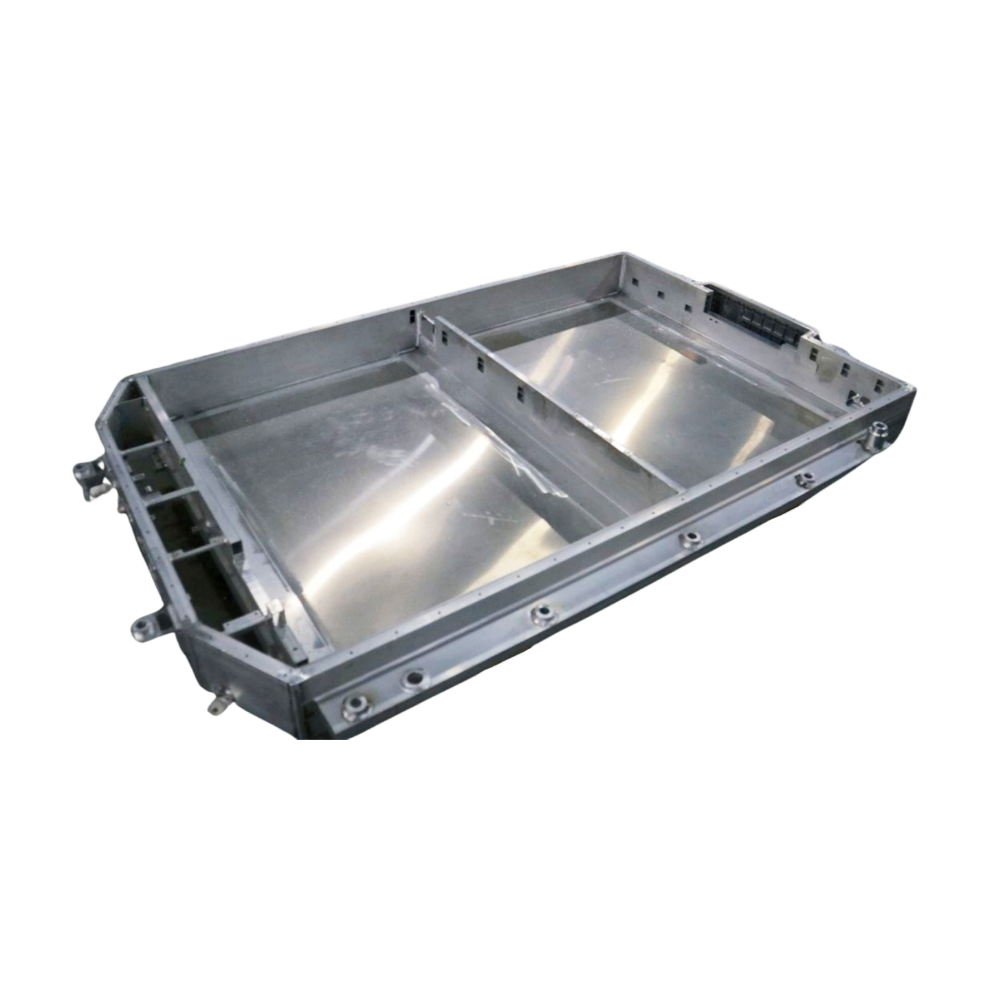The battery tray for new energy vehicles is a critical component of the vehicle's electrical system and a vital safeguard for battery system safety. It requires high strength, corrosion resistance, high-temperature tolerance, and impact resistance. Aluminum alloy, with its low density and high strength, ensures both body performance and rigidity, making it widely adopted in automotive lightweighting projects. Weihong CNC systems' high-speed, high-precision algorithms enhance machining speed while meeting accuracy requirements. Their stable performance and efficient processing applications have earned them strong user preference in manufacturing aluminum alloy battery trays for new energy vehicles. The 3D five-axis laser cutting system demonstrates outstanding performance in processing lithium battery trays for new energy vehicles, achieving exceptionally high machining efficiency. This system efficiently handles complex tray structures and intricate holes, meeting the automotive industry's stringent demands for high-precision components.

Weihong CNC systems can control machining with small line segment toolpaths of 4μm and above, and provide automatic arc speed limiting and corner deceleration functions to ensure smoother machining speeds. They offer multiple mold machining parameter sets to meet diverse process requirements.

Online optimization for linear-to-arc and arc-to-arc transitions, adaptive handling of suboptimal toolpath quality in CAM software, flexible and convenient invocation, supports mid-path command insertion (G05P1Qxx), enhancing workpiece surface finish.

Addressing the issue of workpiece dimensional shrinkage caused by servo lag in certain machining scenarios, real-time feedforward compensation combined with nano-level control precision ensures machining accuracy.

Centered on the HST interpolation algorithm, it integrates the following functions: rapid positioning capability; toolpath smoothing capability; adaptive speed smoothing capability; position-velocity feedforward compensation capability.
_1755498398734_1756429489987.png)
Highly adaptable, most operating conditions can be accommodated by adjusting a single set of parameters to meet all product machining requirements. Supports circular interpolation on any axis, providing debugging methods for Z-axis and rotary axis quadrant points. Minimal parameter adjustments are needed—typically just three parameters—to achieve compensation effects. Compensation is also effective for circles with small radii R1 to R4.
_1756429016168.jpg)

